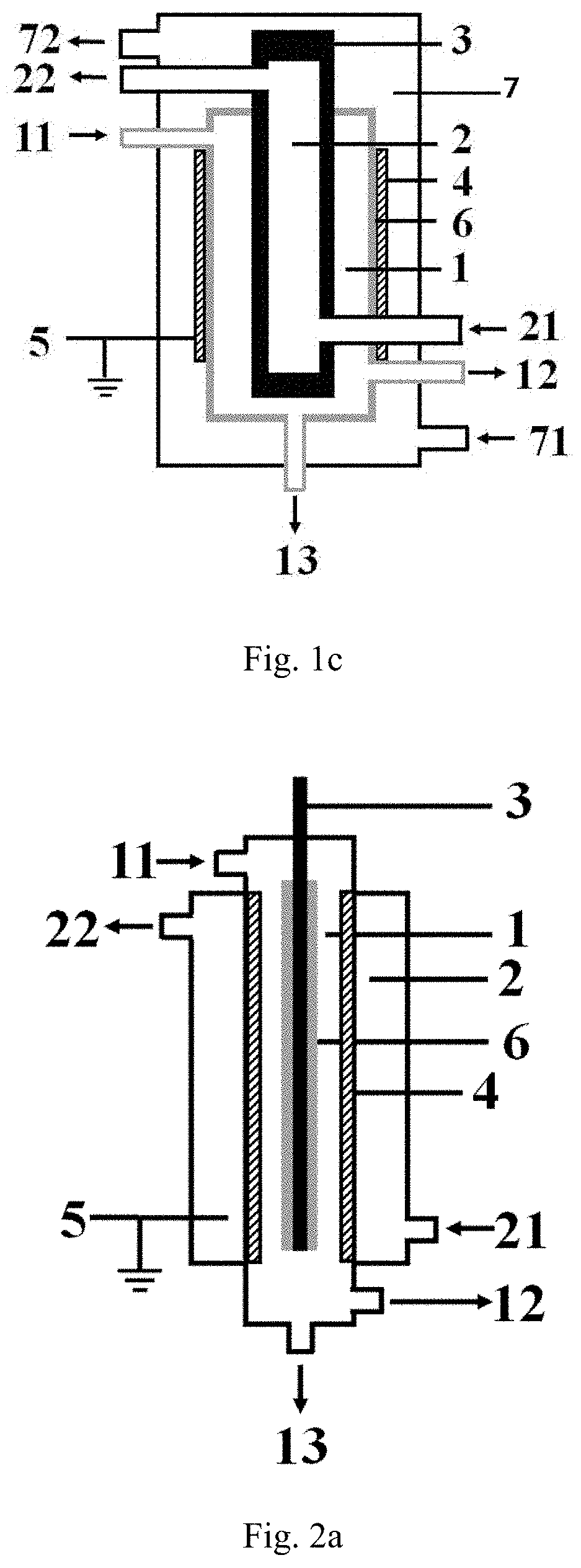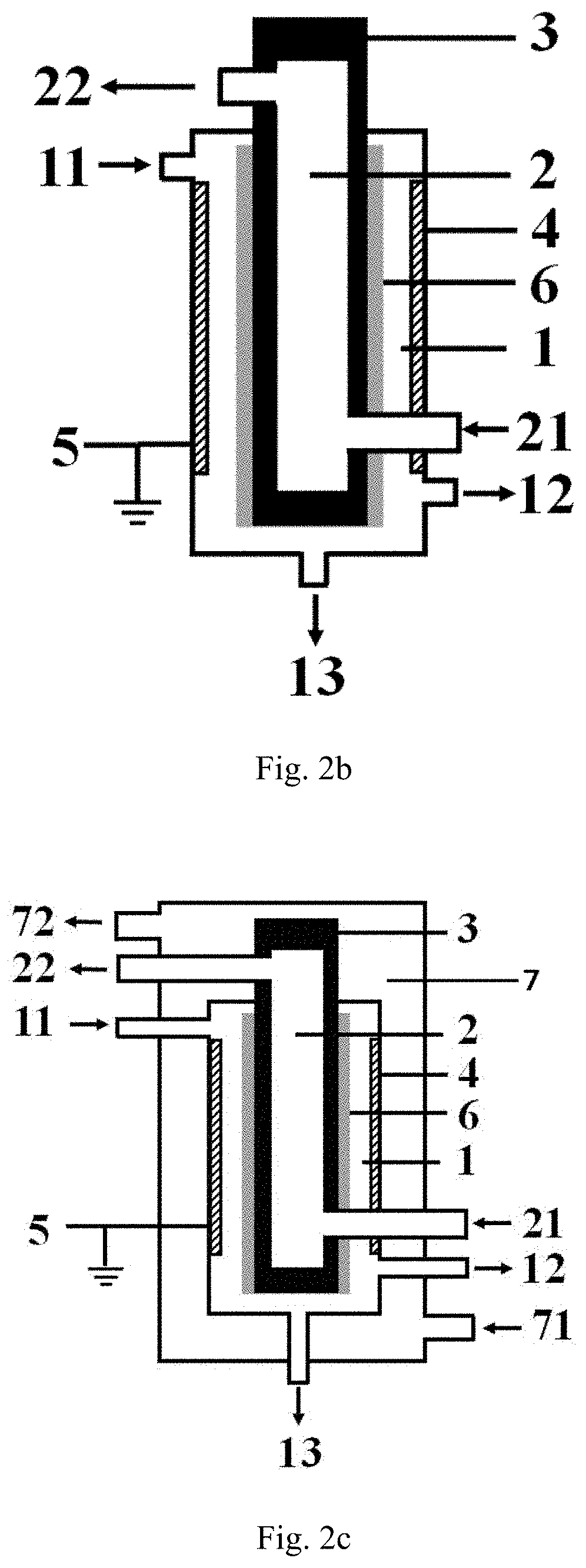Low temperature plasma reaction device and hydrogen sulfide decomposition method
a low temperature plasma reaction and hydrogen sulfide technology, applied in the field of plasma chemistry, can solve the problems of corroding materials, harming human health and polluting the environment, and not being effectively utilized in the conventional hydrogen sulfide recovery process, so as to improve the conversion rate of hydrogen sulfide, reduce the energy consumption of decomposition, and reduce the effect of corrosion
- Summary
- Abstract
- Description
- Claims
- Application Information
AI Technical Summary
Benefits of technology
Problems solved by technology
Method used
Image
Examples
example 1
[0119]The low-temperature plasma reaction apparatus illustrated in FIG. 1a is used for performing the hydrogen sulfide decomposition reaction, the specific structure and structural parameters of the low-temperature plasma reaction apparatus are shown as follows, the inner electrode in the example is exactly the high-voltage electrode.
[0120]The reaction apparatus comprises:
a first cavity provided with a first inlet, a gas product outlet and a liquid product outlet, respectively, wherein all the sidewall of the first cavity is formed by the barrier dielectric, the material forming the barrier dielectric is a hard glass;
a second cavity is nested outside the first cavity, and a second inlet and a second outlet are respectively arranged on the second cavity;
an inner electrode arranged at the central axis position of the first cavity, the material forming the inner electrode is stainless steel, and the inner electrode is connected with a high-voltage power supply;
an outer electrode wrappe...
example 2
[0133]The example uses a plasma reaction apparatus similar to that of example 1 to carry out the decomposition reaction of hydrogen sulfide, except for that in this example:
all sidewalls of the first cavity are formed by outer electrode, the material forming the outer electrode is stainless steel metal foil, the outer electrode is grounded, and the inner electrode is connected with a high-voltage power supply;
the barrier dielectric is disposed on the inner sidewall of the first cavity in a surrounding manner;
the ratio of L2 to the thickness D1 of the barrier dielectric is 20:1; and L3=1:100.
[0134]In the example, a H2S / Ar mixed gas is introduced into a first cavity of the low-temperature plasma reaction apparatus from a first inlet, wherein the volume fraction of H2S is 30%, the flow rate of the mixed gas is controlled such that the average residence time of the gas in a discharge region is 7.8 s, and the reaction pressure in the first cavity of the reactor in the example is kept at ...
example 3
[0137]The example uses a plasma reaction apparatus similar to that of example 1 to carry out the decomposition reaction of hydrogen sulfide, except for that in this example:
all sidewalls of the first cavity are formed by outer electrode, the material forming the outer electrodes is copper foil, the outer electrode is grounded, and the inner electrode is connected with a high-voltage power supply;
the barrier dielectric is disposed on the inner sidewall of the first cavity in a surrounding manner;
the ratio of L2 to the thickness D1 of the barrier dielectric is 0.5:1; and L3=1:200.
[0138]In the example, a H2S / Ar mixed gas is introduced into a first cavity of the low-temperature plasma reaction apparatus from a first inlet, wherein the volume fraction of H2S is 25%, the flow rate of the mixed gas is controlled such that the average residence time of the gas in a discharge region is 10.3 s, and the reaction pressure in the first cavity of the reactor in the example is kept at 0.05 MPa. Af...
PUM
| Property | Measurement | Unit |
|---|---|---|
| discharge voltage | aaaaa | aaaaa |
| discharge frequency | aaaaa | aaaaa |
| pressure | aaaaa | aaaaa |
Abstract
Description
Claims
Application Information
 Login to View More
Login to View More - R&D
- Intellectual Property
- Life Sciences
- Materials
- Tech Scout
- Unparalleled Data Quality
- Higher Quality Content
- 60% Fewer Hallucinations
Browse by: Latest US Patents, China's latest patents, Technical Efficacy Thesaurus, Application Domain, Technology Topic, Popular Technical Reports.
© 2025 PatSnap. All rights reserved.Legal|Privacy policy|Modern Slavery Act Transparency Statement|Sitemap|About US| Contact US: help@patsnap.com



